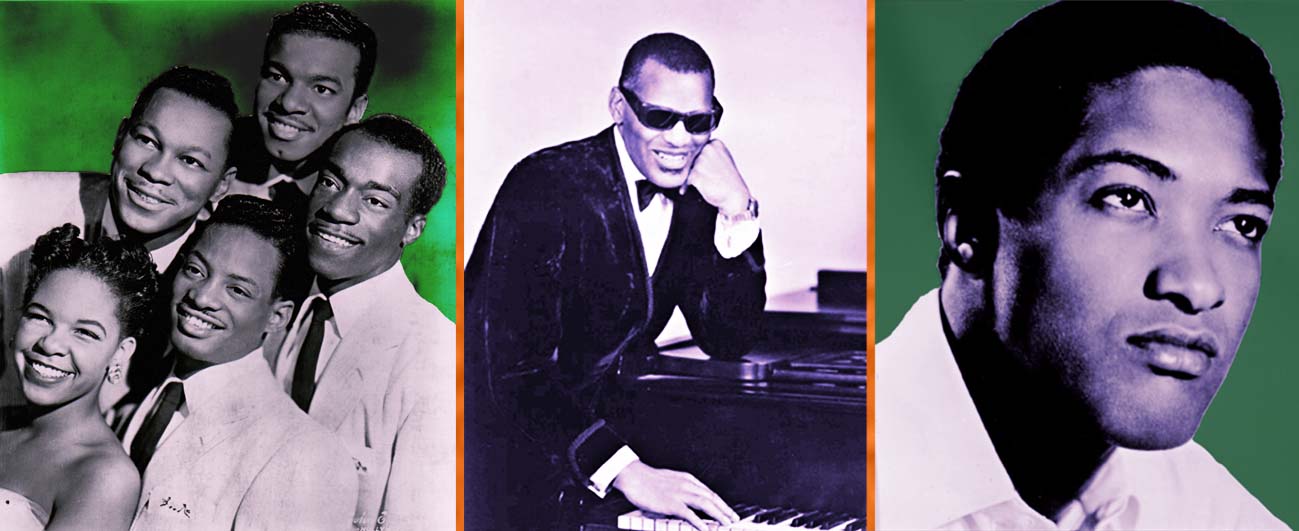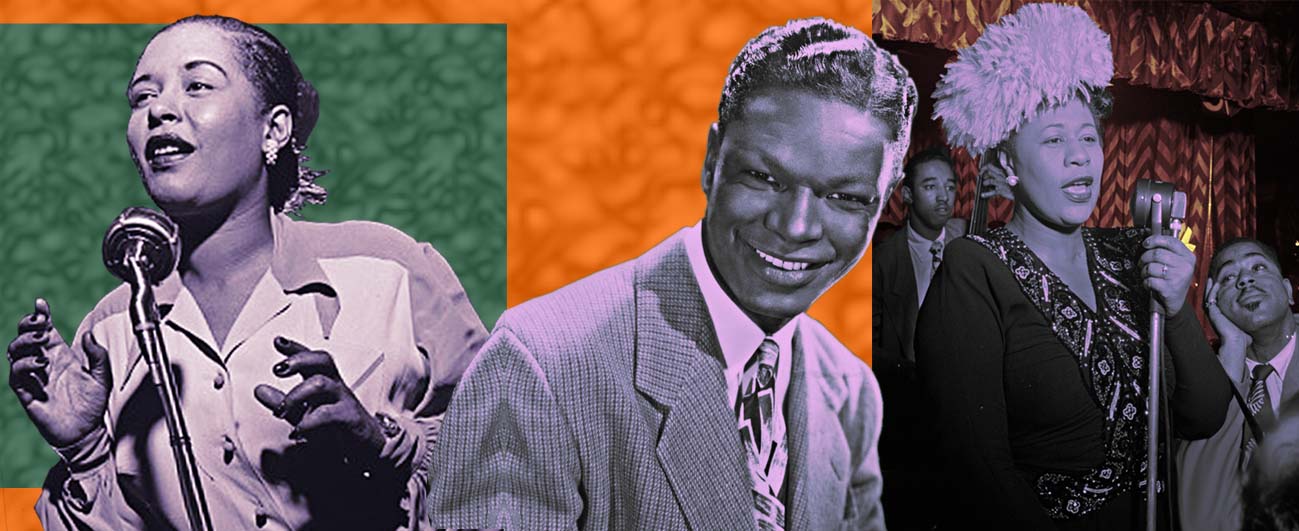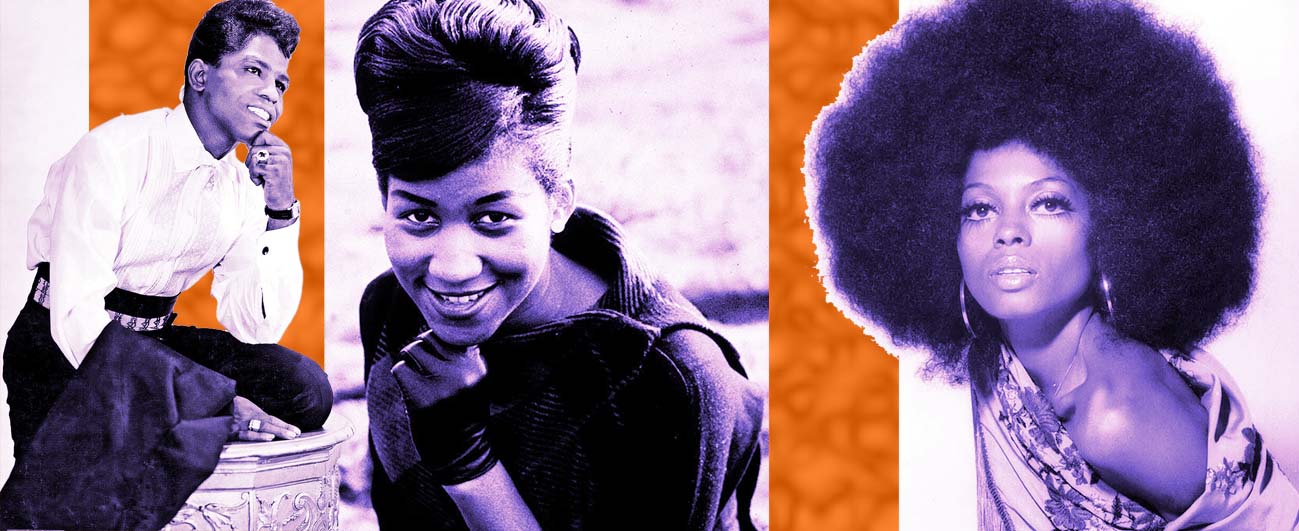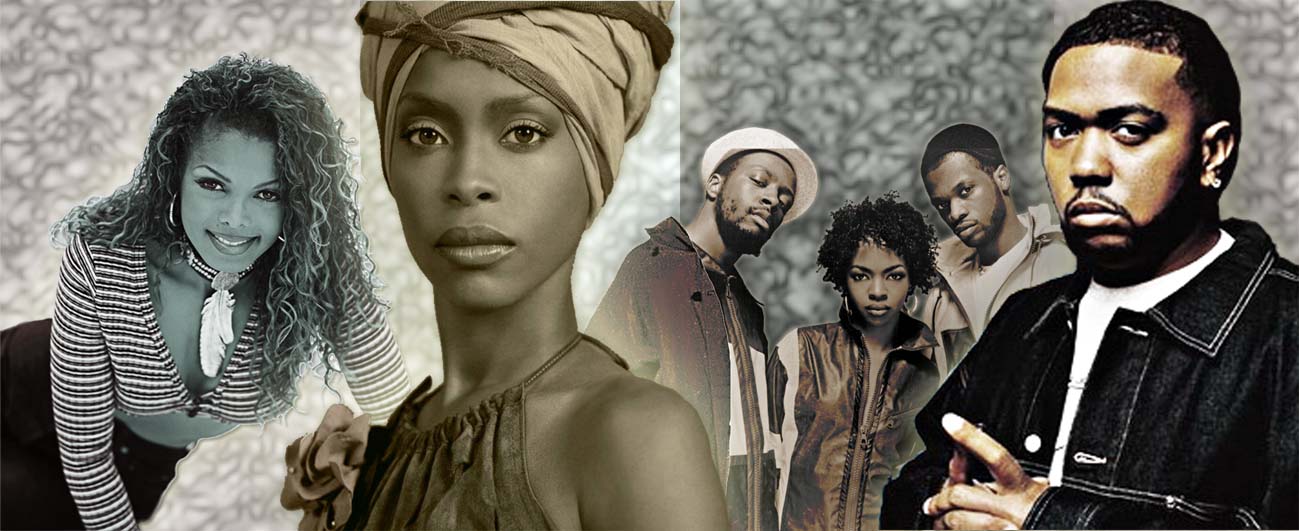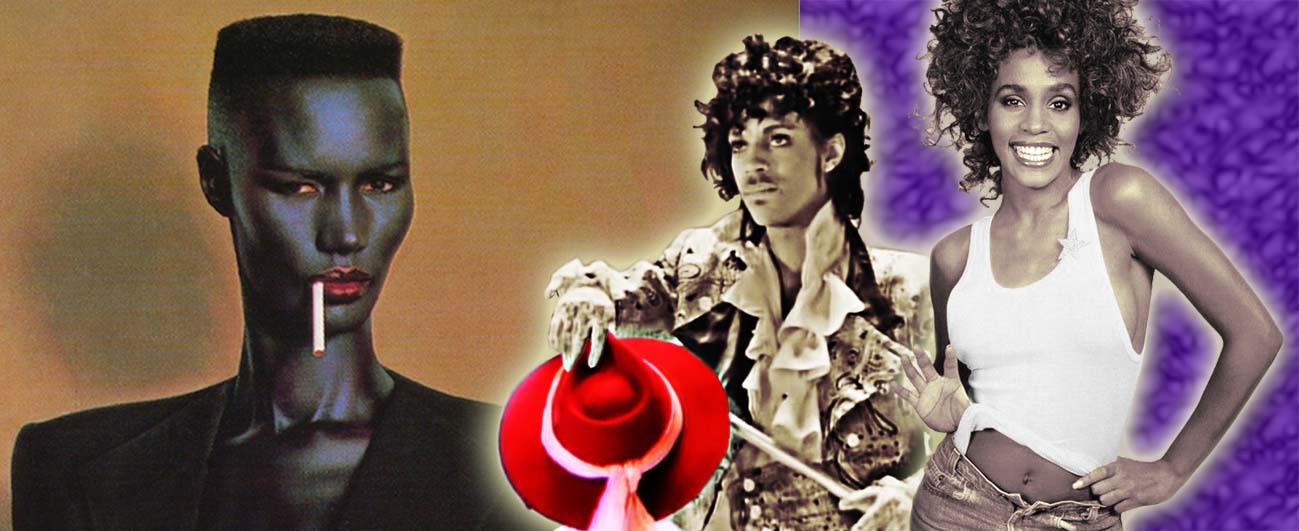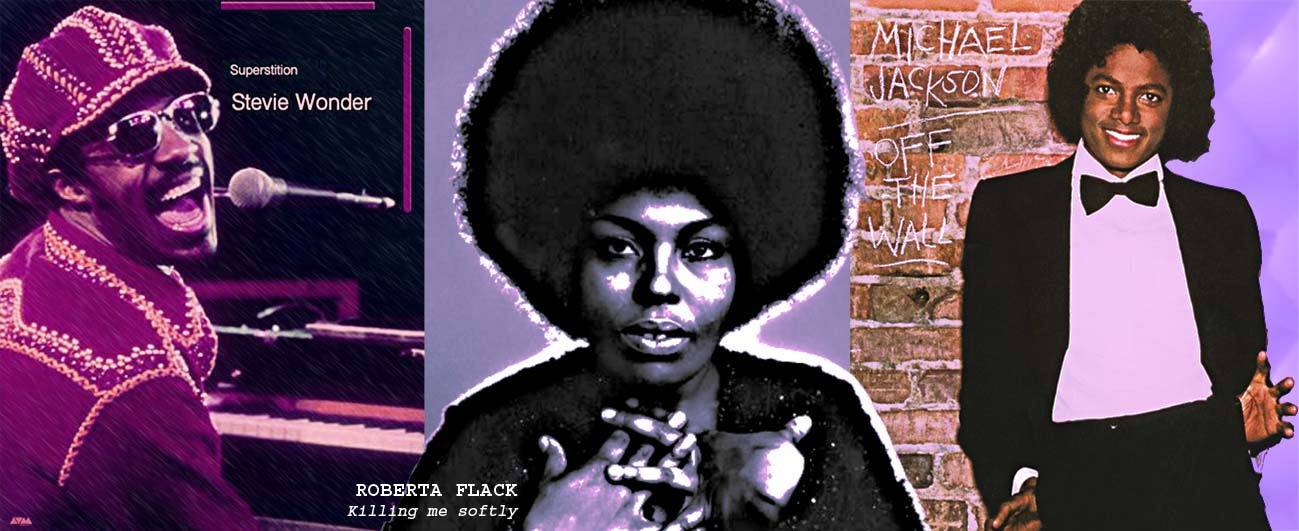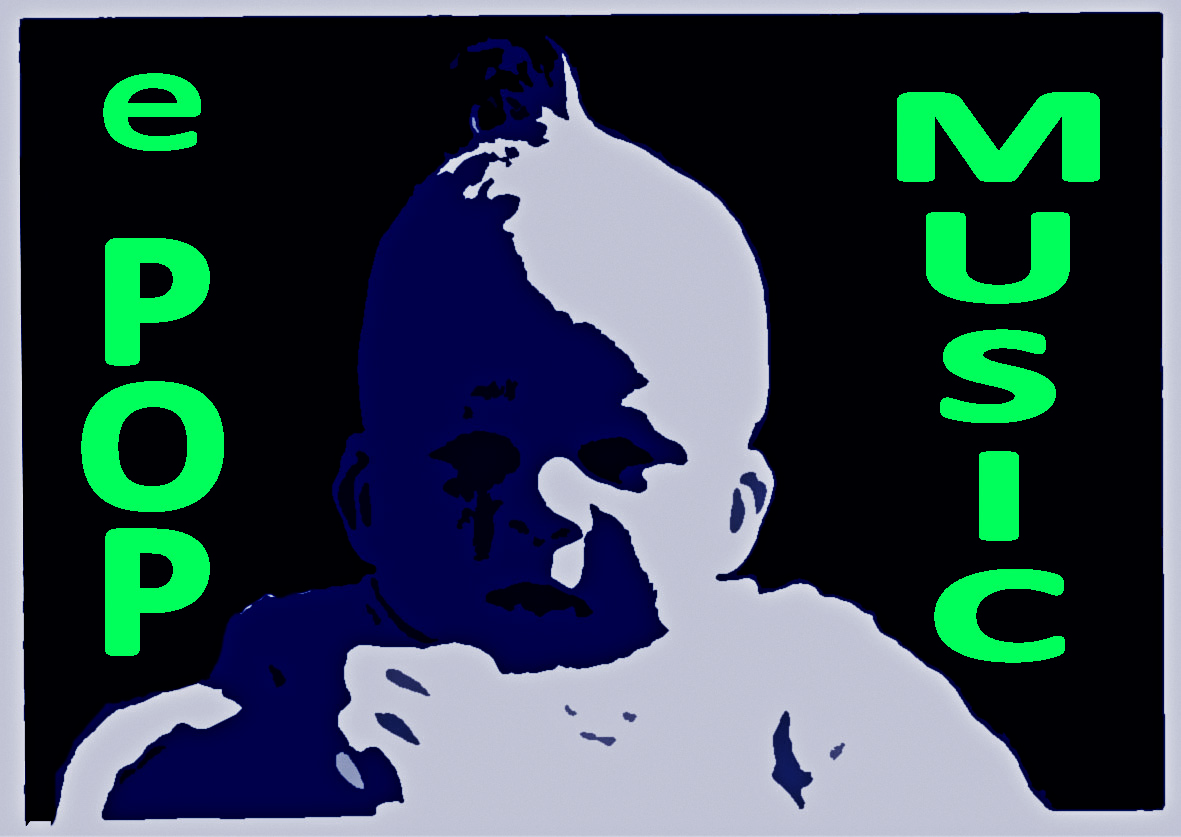MUSIC GENRE ∙ Folk ∙ Rock ∙ RnB SOUL ∙ Rap ∙ Pop song ∙ World music ∙
RnB Soul
JOURNEY THROUGH 800 RnB SOUL SONGS
RnB SOUL ∙ 1920-40s ∙ 50s ∙ 60s ∙ 70s ∙ 80s ∙ 90s ∙ Neo Soul 2000s-2010s ∙
Courtesy of Gus
HISTORY OF "RnB" IN BRIEF
RnB (rhythm ’n’ blues) is the name given in 1950 to the music scene of the Afro-American populations, a name that became ‘RnB Soul’ in 1960.
THE CONTEXT OF THE YEAR 1900
Three musical genres distinctive to African American communities were alive and kicking and due to get livelier at the beginning of the 20th Century:
- BLUES: a heritage of the slave populations of the delta region (the alluvial plain which extends 350 km from Memphis to Vicksburg between the Mississippi River and the Yazoo River basin), a third of which were Islamic and whose songs of lament may among other have derived from the Adhan, the Muslim call to prayer. Since the end of the Civil War, blues had continued to define its own codes on the fringes of folk music and had spread throughout the eight states of the Deep South: Texas, Arkansas, Louisiana, Mississippi, Alabama, Georgia, South Carolina, and Florida.
- GOSPEL: the predominantly vocal and choral music of evangelical Christian communities maintaining the celebration of faith during their religious gatherings.
- RAGTIME JAZZ: the genre that African-American musicians gave after the Civil War to piano music for salon, dance, marches or society events. A precursor to jazz, ragtime benefited in 1895-1910 from the emblematic success of musician-composers Ernest Hogan, Scott Joplin and James Scott, success conveyed in particular by the mechanical reproduction medium of the piano roll.
Both Dixieland jazz and Boogie-woogie emerged from the ragtime culture in 1910-1920.
1920-40s: BLUES, GOSPEL, JAZZ & VOCALS
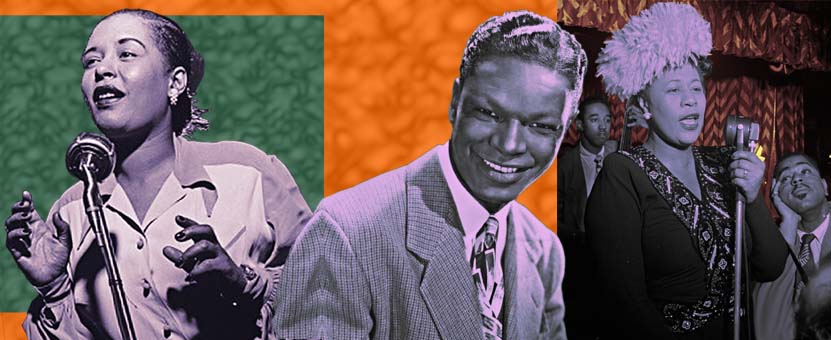
Blues Jazz Gospel 1920-40s : Billie Holiday (1915-1959) ∙ Nat King Cole (1919-1955) ∙ Ella Fitzgerald (1917-1996) ∙
With the advent of radio and recording technology, music began to be broadcast and distributed en masse in the 1920s. While Dixieland jazz and Boogie-woogie were the first genres of African-American music to compete with other contemporary instrumental styles, vocal songs built on jazz and blues quickly became a genre in their own right. As the entertainment market grew, music became the preserve of big cities and in the mid-1920s, top musicians from the Southern states — including King Oliver, Louis Armstrong, and many others —emigrated to Chicago , New York, Philadelphia, Minneapolis where Swing-jazz and Big-band jazz were about to enter their golden age. Gospel songs only reached mainstream audiences in the early 1940s, first with the bands 'The Golden Gate Quartet' and 'The Jubalaires' and from 1946/47 with Mahalia Jackson and Sister Rosetta Sharpe as the genre's superstars (.. more, see RnB 1920-40s).
1946-1948: THE DISRUPTION OF "ROCK"
The first tracks of rock music were recorded in the USA in 1945/46 as outspreads from swing jazz, blues and jump-blues, boogie-woogie, honky-tonk and country music. The advent of Rock’n’roll as a distinct genre in 1947/48 revolutionized not only American folk and country music but also blues, popular vocals and gospel while marking the end of the era for Swing-jazz, Big band jazz and Boogie-woogie. In the following years, each of these musical genres integrated in its own way the moods, rhythms and instruments of rock music.
RnB 50s
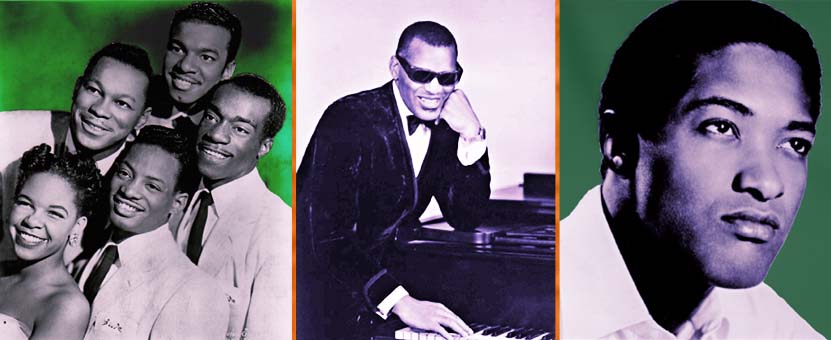
RnB 50s : The Platters, Ray Charles, Sam Cooke
In 1950, the name Rythm'n' Blues - or RnB - was given to the music scene where the most popular and high-profile musical genres developed as a result of the aforementioned evolution. As such, RnB defined the modern pop music of Afro-American communities. Throughout the 50s, its most successful subgenres were jazz, blues, RnB rock, RnB gospel and RnB vocals.
- RnB ROCK took center stage from 1951 to 1954 under the leadership of Ruth Brown and Ray Charles before falling under the spell of Bo Diddley, Chuck Berry, Little Richard and James Brown during the 1955-59 rockabilly era.
- RnB VOCALS followed the musical style pioneered in the 1930s by The Mills Brothers and supported by the advances made in the 40s on the crooner scene by jazz singer Nat King Cole. It spawned the doo-wop frenzy in the mid-50s with serial hits by new bands like The Platters, The Coasters, The Moonglows, The Five Satins or Frankie Lymon & the Teenagers.
- JAZZ became a more complex and confidential music segment, praised both technically and artistically but with limited audience. Notwithstanding such evolution, singers Billie Holiday, Ella Fitzgerald - who both started in the 1930s -as well as Dinah Washington and Sarah Vaughan leave their mark forever in the jazz-song segment.
- RnB BLUES modernized and became more widespread with Screaming Jay Hawkins turning classic blues into spectacular popular acts and B.B. King transforming it into elaborate jazzy blues-rock. A number of songs promoted the genre's mass popularity and have since become classics.
- RnB GOSPEL drew on popular forms developed in 1941-1945 by the spirituals vocal ensemble The Jubalaires and in 1946-1949 by the queen of gospel Mahalia Jackson. The genre flourished between 1950 and 1955 with bands like The Five Blind Boys, The Famous Blue Jay Singers, The Soul Stirrers and The Five Royales.
(.. more, see RnB 50s)
RnB Soul 60s
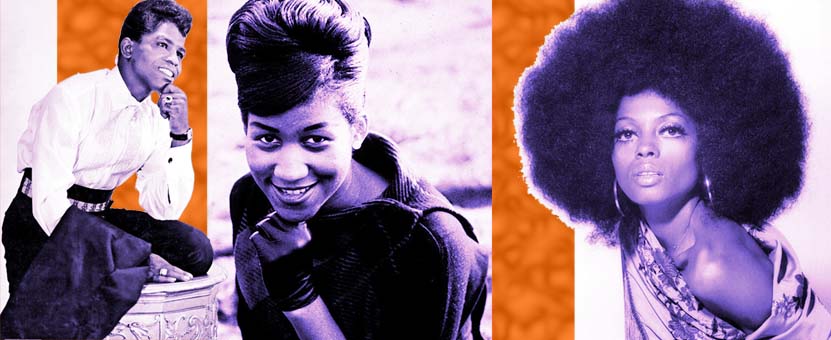
RnB Soul 60s: James Brown (1933-2006) ∙ Aretha Franklin (1942-2018) ∙ Diana Ross (born 1944) ∙
In 1960, RnB's high-profile scene began to be called 'RnB Soul' due to the distinctve trendsetting impact of its vocal stars who were seen as putting their soul into their voice.
- BLUES JAZZ was marked by the beginnings of Aretha Franklin (1942-2018), a singer and musician from gospel who shone as much in the soul vocals and rock registers as in blues-jazz. Nina Simone (1933-2003) was the other great lady of the 60s’ RnB blues-jazz, where veteran Louis 'Satchmo' Armstrong (1901-1971) released 'What a wonderful world' (1967), his biggest commercial success. At the other end of the spectrum, "Little" Stevie Wonder was blind and 13 when his single "Fingertips part II" (1963) topped the Billboard and 17 when his progressive soul track "I was made to love her" (1967) topped the RnB charts. Singer-songwriter and pianist Roberta Flack (born in 1937) personifies the next generation of popular jazz-song and released her first album in 1969.
- RnB ROCK saw the arrival of The Valentinos with Bobby Womack, Wilson Picket, Ike & Tina Turner and gave way to psychedelic RnB rock in 1968-70 with the rise to fame of Jimi Hendrix, Sly & the Family Stone and Funkadelic.
- On the SOUL VOCALS scene, the king of soul Sam Cooke (1931-1964) suffered a violent death at the age of 33. The new king of soul was Otis Redding (1941-1967) but he too died prematurely at the height of his fame, and it was posthumously that his signature song '(Sitting on) The dock of the Bay' was published in January 1968. Soul singers Ben E. King, Marvin Gaye, Aaron Neville, Roberta Flack and Dionne Warwick also appeared during the decade, as did vocals groups The Temptations, The Four Tops and The Jackson Five. Girl vocal groups had seen popularity earlier – as with the songs "Lollipop" (1958, The Chordettes) and "I met him on a Sunday" (1958, The Shirelles) – and thrived on the RnB Soul scene of the 1960s where the most popular became The Supremes with Diana Ross, in particular with the planetary hit "Baby love" (1964).
- PROGRESSIVE RnB SOUL took hold in 1967 - the same year as psychedelic rock (cf. Rock USA 60s) - and blew a new wind. Incumbent vocals groups such as The Temptations and Diana Ross & the Supremes successfully joined the genre where the band Fifth Dimension took center stage. Three songs among the jewels from this era: Marlena Shaw's 'California soul', Donny Hathaway's 'The Ghetto pt. 2' and 'Cissy strut' by funk pioneers The Meters.
(.. more, see RnB Soul 60s)
RnB Soul 70s
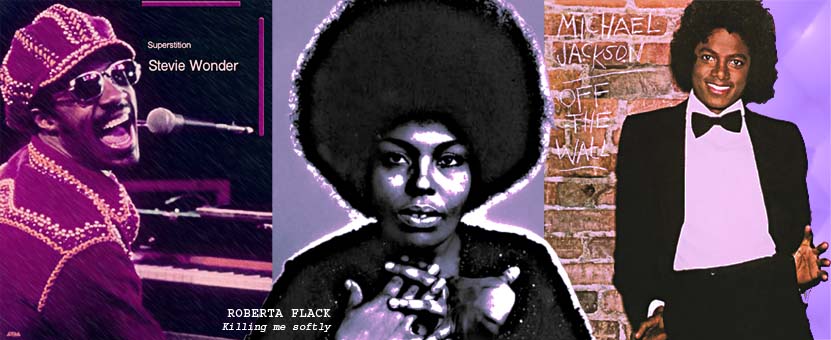
RnB 70s: Stevie Wonder (born 1950) ∙ Roberta Flack (born 1937) ∙ Michael Jackson (1958-2009) ∙
In the 1970s, RnB FUNK, DISCO and SOUL was the commercially most successful music genre worldwide, while Progressive RnB kept delivering stunning developments.
(.. more, see RnB Soul 70s)
RnB Soul 80s
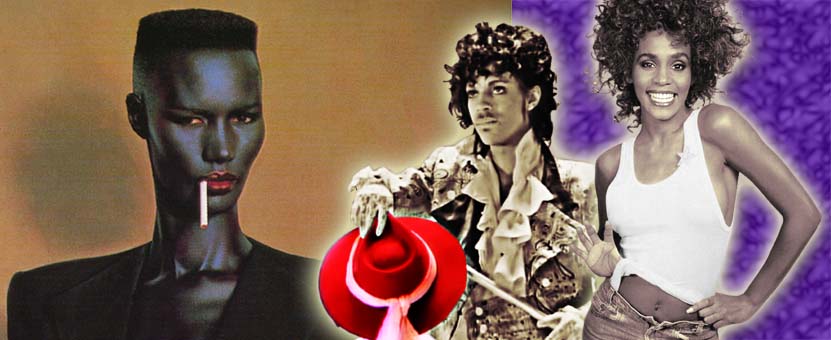
RnB Soul 1980s: Grace Jones (born 1948) ∙ Prince (1958-2016) ∙ Whitney Houston (1963-2012) ∙
(.. more, see RnB Soul 80s)
RnB 90s
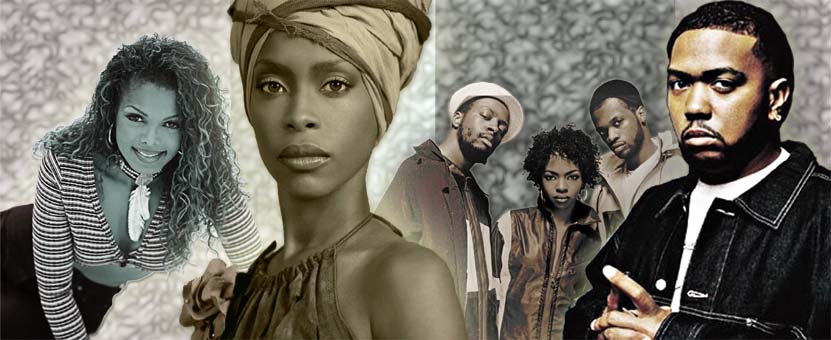
Janet Jackson (born 1966), Erykah Badu (born 1971), The Fugees (active 1990-97), Timbaland (born 1972)
(.. more, see RnB Soul 90s)
